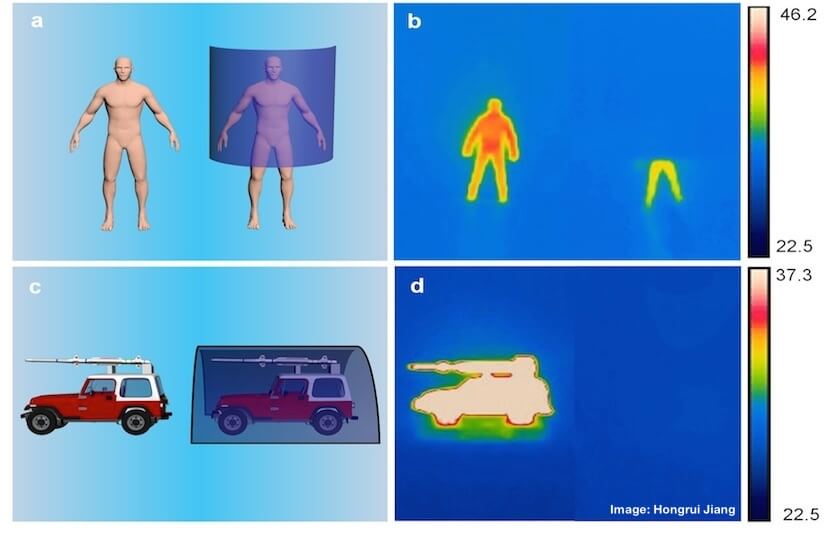A team of researchers at the University of Wisconsin-Madison has developed an ultrathin stealth sheet — a real-life cloak of invisibility, unlike Harry Potter’s — that disguises objects from detection by infrared cameras.
All warm objects — from human bodies to car engines — emit a certain amount of infrared light. The hotter the object, the more infrared energy it emits.
This can be captured by thermal imaging cameras, capable of detecting infrared light.
Firefighters, police officers, and military personnel alike use such cameras to detect heat sources and locate people through smoke, fog and the dark.
The new stealth material, composed of black silicon, absorbs mid- and long-wavelength infrared light. Draped over a heat-emitting object, the object underneath then becomes invisible to infrared-detecting cameras.
Black silicon is well-known for its ability to capture visible light.
Typically, it is made by striking silicon with lasers. The process modifies the structure of the material’s surface, embedding it with millions of microscopic needles known as nanowires.
When light hits the material, rather than reflecting off the surface, it bounces between the nanowires and effectively becomes trapped in the material. Because of the unique ability of black silicon to absorb visible light, it is most commonly used in solar panels.
Seeing how effective it was at absorbing visible light, the researchers wondered how it would respond to longer, infrared light waves
“We previously used black silicon as a highly absorbed material for the visible light spectrum,” said Hongrui Jiang, a professor of electrical and computer engineering at UW-Madison. “We then became curious about its absorption at the infrared range, from near- to mid- to long-infrared. It turned out very well.”
Jiang said that the team then modified the fabrication process for producing black silicon to maximize infrared absorption.
“We didn’t completely reinvent the whole process, but we did extend the process to much taller nanowires,” Jiang said in a statement.
They did this by using miniscule silver particles to carve into a thin layer of silicon, creating what Jiang refers to as “forests of silicon nanowires,” while also embedding silver particles into the material.
These taller nanowires and the silver particles both help to maximize the amount of light absorbed by the material.
They also modified the material to have a flexible backing infused with small air channels, ensuring that it doesn’t get too hot while absorbing infrared heat.
The resulting product is a very effective shield.
The ultrathin sheet is less than a millimeter thick, but is capable of absorbing 94 percent of infrared light that hits it.
It also absorbs light waves across the infrared spectrum, making it more effective than other infrared shields. Warm objects that are covered by the cloak are rendered virtually invisible to detection by infrared cameras.
The new material appears to be a major upgrade over existing infrared shield technology.
“There has been lots of interest in invisibility cloaks in the visible light spectra and microwave spectra,” said Jiang. “Stealth in wide infrared spectra has not been explored much. Current methods using metal sheets or linings or thermal blankets are heavy, high cost, and have many drawbacks.”
The black silicon stealth material is lighter, cheaper and easier to use than alternative shield materials.
It can also be modified to include electronic heating elements that display false heat signatures. For example, a ball could be disguised as a bar, as in the image below.
“You can intentionally deceive an infrared detector by presenting a false heat signature,” Jiang said in a statement. “It would conceal a tank by presenting what looks like a simple highway guardrail.”
The researchers have already secured a U.S. patent for their technology, but Jiang said that more research and development needs to be done before they can market their product.
They are currently working to scale up the manufacturing process to make it possible to produce on a larger scale.




